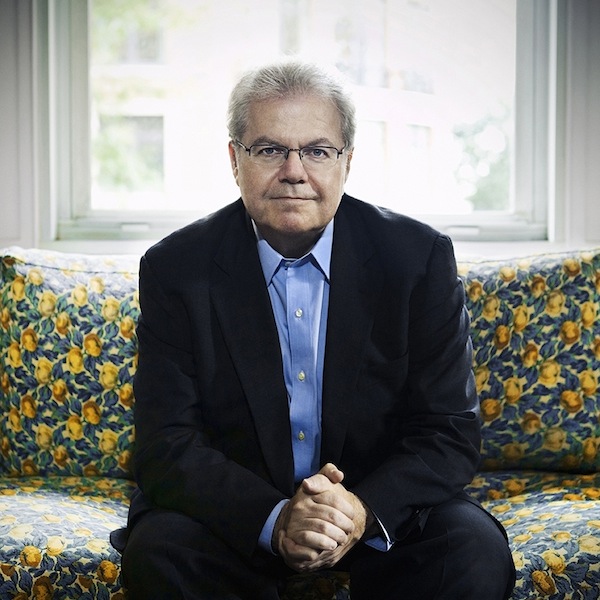New World Symphony soars with Ax’s Beethoven, MTT’s Sibelius

Emanuel Ax performed Beethoven’s Piano Concerto No. 1 with Michael Tilson Thomas and the New World Symphony Saturday night.
Like fine wine, Emanuel Ax seems to only get better with age. The veteran pianist joined Michael Tilson Thomas and the New World Symphony at the Arsht Center Saturday night for an exquisite and refined performance of Beethoven’s Concerto No. 1 in C Major.
In what was actually the second of Beethoven’s keyboard concertos to be written, Ax, Tilson Thomas and the New World fellows provided a textbook example of perfect collaboration. Soloist, conductor and players seemed to breath the music together.
Tilson Thomas’s brisk tempo for the orchestral introduction was Allegro con brio indeed but he wove the secondary subject in a calm and reflective manner. After more than four decades on the concert stage, there is still a light sparkle in Ax’s touch and his technique remains fluent and accurate. He brought out the humor within Beethoven’s classical lines and can bend a phrase without losing rhythmic urgency. Dialogue between piano and winds emerged admirably transparent.
In a flowing reading of the Largo, Ax blended idiomatic classicism with a more romantic approach. The wind playing was especially distinguished and the plucked violin notes at the second movement’s conclusion for once were totally audible—one of many instrumental felicities that Tilson Thomas illuminated. Ax injected a touch of the rustic beneath his elegantly sculpted playing in the Rondo. The rapid runs were assayed with spot-on accuracy. Tilson Thomas’s astute balancing allowed brass and wind voices to come through with force and impact without overwhelming the ensemble.
A prolonged ovation from both audience and players brought Ax back for an encore of Chopin’s Nocturne in F-sharp Major, Op. 15, No. 2. The pianist’s subtle rubato enhanced the aristocratic sensitivity of his phrasing.
The orchestral academy’s gifted conducting fellow Dean Whiteside opened the program with Wagner’s Overture to The Flying Dutchman. Whiteside’s conducting over the past two seasons has been consistently impressive and his Wagner did not disappoint. The initial string tremolo was intense and he whipped up the storm music in a fiery manner. Senta’s redemption motif was shaped expansively and the sailors’ songs were given the lift and lilt of a sea shanty. Whiteside avoided the tendency to play the coda at a too-fast tempo and he allowed the final emergence of the Dutchman theme in the brass to ring out vibrantly. The rounded sonority of Roy Femenella‘s solo horn was a standout in a strong ensemble effort.
Tilson Thomas is one of the finest Sibelius conductors this side of Finland. He concluded the evening with a majestic traversal of the Finnish master’s Symphony No. 5 in E-flat Major. In the opening movement, Tilson Thomas’s unhurried pacing encompassed both Sibelius’ sense of spaciousness and momentum. The dance-like themes in the winds had the requisite bucolic verve but there was tension lurking beneath every bar. The conductor kept the music’s dramatic arc to the fore, layering the crescendos gradually to produce hall-filling climaxes. The evocative phrasing of Francisco Joubert Bernard’s solo bassoon and the strings’ deeply resonant sonority took special honors.
The deceptively simple thematic material of the Andante mosso, initially introduced by flutes and plucked strings, was given straightforward, unadorned treatment and was all the more effective for that. Often inaudible details leapt out of the orchestral fabric in the expert highlighting of instrumental choirs.
Incisive articulation from the unison strings of the opening figure in the final Allegro molto presaged the big chorale theme in the mellow horns. Tilson Thomas sustained the movement’s excitement and drew wonderfully variegated tiers of dynamics from the orchestra. When the chorale melody reemerged at the movement’s conclusion, the full brass sounded warm and rich rather than raucous. Tilson Thomas made the silences between the final six chords (one of Sibelius’ master strokes) really count. The icy grandeur of the symphony was allowed to be heard without undue flourish or exaggeration– displaying both Tilson Thomas and Sibelius at their best.
Roberto Abbado conducts the New World Symphony in Beethoven’s Symphony No. 7 and Vaughan Williams’ On Wenlock Edge with tenor soloist Matthew Polenzani, and Dean Whiteside conducts Faure’s Pelléas et Mélesande Suite 7:30 p.m. November 16 and 17 at the New World Center in Miami Beach. nws.edu; 305-673-3331.
Posted in Performances
Leave a Comment
Sun Nov 4, 2018
at 11:55 am
No Comments




